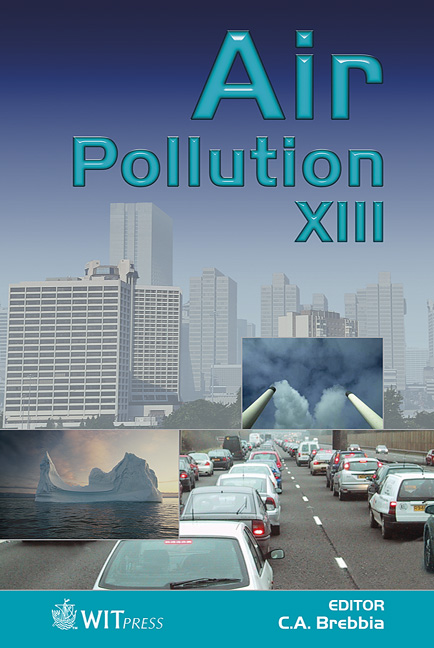The Impact Of Biogenic VOC Emissions On Tropospheric Ozone Formation In The Mid-Atlantic Region Of The United States
Price
Free (open access)
Transaction
Volume
82
Pages
7
Published
2005
Size
366 kb
Paper DOI
10.2495/AIR050101
Copyright
WIT Press
Author(s)
M. L. Bell & H. Ellis
Abstract
In many areas, natural sources contribute a substantial fraction of volatile organic compound (VOC) emissions, which are precursors to tropospheric ozone (O3). To investigate the significance of biogenic VOC emissions on ozone formation, meteorological and air quality modelling were used to generate hourly ozone estimates for a case-study high ozone episode in the Mid-Atlantic region of the United States for three emissions scenarios: actual emissions; a 100% increase in biogenic VOCs; and an additional 100% increase in vehicular emissions of ozone precursors. The modelled concentrations reflect the total effect of changes from emissions, incorporating interactions between anthropogenic and biogenic emissions. Elevated biogenic emissions had a larger impact on ozone concentrations than did the comparable relative increase in vehicular emissions. For instance, the increased biogenics raised the max 1-h ozone level by 54 ppb, however the additional increase in vehicular emissions added only a further 17 ppb. The highest ozone levels and the largest increases in ozone typically were observed in urban areas for both increased emissions scenarios. Results indicate the importance of biogenic emissions for ozone formation in this region. This has implications for the design and implementation of ozone policies as these emissions are difficult to control, and for the impacts of climate change, which could raise biogenic VOCs levels through elevated temperature. Keywords: ozone, air pollution, air quality modelling, volatile organic compounds, nitrogen oxides, biogenic emissions.
Keywords
ozone, air pollution, air quality modelling, volatile organic compounds, nitrogen oxides, biogenic emissions.





